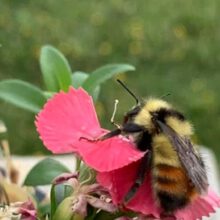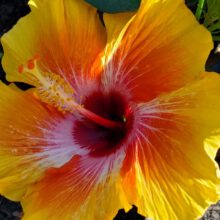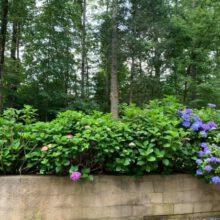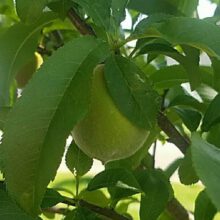The Japanese Garden
Do you also like Japanese gardens and do you want one? Despite disappointing weather, there are some who enjoyed visiting some Japanese gardens, including in Kyoto. The often great age of these gardens, the perfect composition of natural elements and the philosophy behind them make a visit to such a garden a special experience.
History of the Japanese garden.
The first mentions of Japanese gardens serve as ornamental gardens; an environment in which the emperor can enjoy himself. In the sixth century, Chinese garden styles and garden techniques came to Japan through trade missions, among other things. These first gardens are laid out on the Japanese main island of Honshu in the capital Nara, nowadays mainly known to tourists for the many deer.
After Kyoto became the new capital in 794, gardens were also laid out here that can be divided into palace gardens and gardens of nobles, gardens at villas on the outskirts of the city and temple gardens. The layout of the Japanese gardens is according to Feng Shui rules. In addition to planting, elements in the garden include artificial lakes, bridges, streams and an empty plain with white sand or gravel that was used for religious ceremonies, among other things.
With the weakening of the emperor’s power, nobles are creating gardens that have come to be known as paradise gardens because they have to depict the legendary Paradise of the West by Amida Buddha.
After many gardens in Kyoto were destroyed during the civil wars of 1156 and 1159 and the capital was temporarily relocated to Kamakura, contacts with China intensified again and Chinese monks, fleeing from the Mongols, brought the idea of Zen gardens with them. Among other things, the original Golden Pavilion dates from this time, but also the rock gardens consisting of a gravel plain with pieces of rock here and there.
In the sixteenth century, gardens were created around castles of the then ruling power. These gardens are mainly intended to be viewed from above and include ponds, bridges and artificial mountains, including a representation of the mythical mountain Horai. Also from this time is the tea garden with a tea house consisting of a very simple wooden construction that should represent the house of a hermit monk.
In the Edo period, about the seventeenth and eighteenth centuries, when political power shifts to Edo, now Tokyo, promenade gardens and dry rock zen gardens are mainly constructed. Buildings in the garden have a simple style, the same as what Japanese establishments are currently known for, and an open side facing the garden so that the interior and exterior blend together.
At the end of the nineteenth and early twentieth century, dilapidated private gardens were renovated and made accessible to the public. There are also experiments with western styles by landscape gardeners. Wealthy industrialists and political rulers focus more on landscaping gardens in a naturalistic style.
After the Second World War, new gardens were mainly created by hotels, universities and government agencies. Although there are still landscaped gardens in classic style, more and more gardens have a modern look, which also uses modern materials, including concrete.
Elements in the Japanese garden.
Nothing is left to chance in the classical Japanese garden. Although the garden is artificial, it does have a natural look. This is because only natural materials are used and an attempt is made to depict a copy of a truly natural environment on a small scale. In addition to this reproduction of nature, in most cases there is a philosophy behind the design of the garden, which comes from the Chinese Feng Shui. Many Japanese gardens consist of water, sand, gravel, stones, bridges, stone lanterns, water basins, trees, flowers and fish.
Water in the Japanese garden.
Water elements bowl in the form of ponds, streams, waterfalls and water basins. In dry rock gardens, white sand is also used as a symbol for water. In Buddhism, water is the symbol for yin and stone is the symbol for yang. The oldest manual for the construction of a Japanese garden “Sakuteiki” states that water must enter the garden on the east side and leave the garden on the west side. This would remove the evil from the garden, resulting in a healthy and long life. From north (water) to south (fire) also occurs regularly. This establishment should also bring good luck. Small islands in the ponds often symbolize the mythical mountain Horai or Penglai. In the past, water basins served to give visitors to a tea ceremony the opportunity to wash themselves using a wooden ladle. The water is supplied through a bamboo pipe. A shishi-odoshi that flips over every once in a while due to the weight of the water was used to scare away animals.
Sand, gravel and stones.
Sand, gravel and boulders are also used symbolically in the Japanese garden. Pointed vertical stones, for example, symbolize Mount Horai or Heaven, a flat stone symbolizes Earth and a stone in between can symbolize humanity. Sand and gravel can symbolize beach or water. Stones are used in different shapes, sizes and sizes, but brighter colors are avoided. Stones are often grouped in groups of two, three, five or seven.
Bridges.
Bridges are used in the Japanese garden to connect land separated by streams. These bridges can be made of stone or wood and are flat or arched. In temple gardens they are sometimes painted red, but red bridges are more common in China than in Japan. In promenade gardens, the bridges serve to allow the visitor to fully enjoy the garden. However, a bridge can also be used as a symbol of the transition to immortality or paradise.
Japanese lanterns.
The stone Japanese lanterns were first used only for paths to temples. Later they were also used around other shrines, in tea gardens or simply as decoration. The lantern consists of five segments where the bottom part symbolizes the earth (chi), the part above it for water (sui), the third part around the light for fire (ka), the fourth part for air (fu) and the top part for mind (ku).
Trees and flowers.
In older gardens, flowers are used more sparingly than in newer gardens. The growth of the plants is not left to chance; meticulous maintenance ensures, among other things, that clear views are not lost. Special techniques are used to make trees look older or to shape them. Branches of old trees are sometimes supported to keep them from breaking under their own weight or the weight of snow. Moss is also often used as an aging agent. Plants common in Japanese gardens are: Japanese apricot, azalea, bamboo, camellia, Japanese cedar, Japanese cypress, pine, oak, maple, ginkgo, cherry and willow.
Fish in the Japanese garden.
Koi carp in Japanese garden Goldfish and koi carp are common in Japanese gardens. The goldfish was introduced in Japan in the sixteenth century but existed in China more than a thousand years ago. The koi carp (nishiki-goi) was bred in Japan around 1820 through selection of common carp. “Koi” simply means “carp” but because the word sounds like the word for “affection”, the koi carp in Japan is a symbol of love and friendship.



